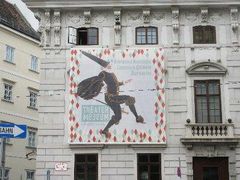Austrian Theatermuseum

Here, in the baroque Lobkowitz Palace near the Imperial Palace, highlights of the magic of stage are caught forever. More than 1,000 stage models, 600 costumes and props from three centuries, more than 100,000 drawings and prints as well as more than 700,000 theater photos are among the holdings of the museum. There are also the elaborate stick puppets of the art nouveau artist Richard Teschner, including his marvelous "Figurenspiegel" (concave mirror with light effects).
The Theatermuseum brings together collections on all topics of the performing arts and is one of the biggest and most important documentation centers of its kind in the world. Objects of contemporary Austrian and international stage art from spoken and musical theater via dance and film to figure and puppet theater are kept in the archives and scientifically researched, published and presented in exhibitions.
The museum evolved from the Theater Collection of the Austrian National Library, whose origins go as far back as the Baroque era. In 1923, the collection was enlarged when the theater collection of the famous actor and former director of the Vienna Burgtheater, Hugo Thimig (1854-1944), was bought.
A separate department of the museum is devoted to children where they are introduced to the stage-world in a playful way. The museum also houses a grand concert hall, the "Eroica Hall", called after Beethoven's Third Symphony, dedicated to the composer's patron and owner of the palace, Franz Joseph Maximilian Prince Lobkowitz. Subsequently many of Beethoven’s compositions were performed at the Lobkowitz Palace.
Until August 2021, the Picture Gallery of the Academy of Fine Arts (which is being renovated) will be presented in a new hanging scheme in the adapted rooms of the Theatermuseum. Alongside Bosch’s Last Judgment triptych, other highlights from the 15th to 19th centuries can be seen, including leading works of European painting from Lucas Cranach the Elder, Titian, Rubens, Van Dyck and Rembrandt through to Tiepolo, Guardi and Füger.
www.theatermuseum.at
